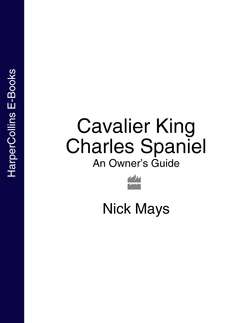Читать книгу Cavalier King Charles Spaniel: An Owner’s Guide - Nick Mays - Страница 10
Ideal show dogs
ОглавлениеWhilst small spaniels still had their admirers, most dogs were kept during the eighteenth and early nineteenth centuries as working animals. Simple ‘pet dog’ ownership was a luxury afforded only to the very rich. In major British cities, such as London, Manchester and Liverpool, the main canine attractions were bull and bear baiting with the larger bull breeds of dogs, and infamous rat pits, where terriers would be placed in a ring with live rats and wagers taken on how many rats a dog could dispatch in a given space of time. Dog fighting was also a popular pastime.
However, during the mid-nineteenth century, with many of these cruel ‘sports’ being outlawed, some dog owners began to turn more to ‘showing off’ dogs alongside each other rather than pitting them in combat with each other. In fact, many early dog shows were held in the same public houses where ‘ratting’ used to take place. In this way, the toy spaniel came back into fashion and was sought after as a show dog. These dogs had flat faces, undershot jaws, and domed skulls with long, low-set ears and large, round frontal eyes – typical of the modern King Charles Spaniel.
When the British Kennel Club was founded in 1873, the King Charles Spaniel became one of the first breeds to have formal standards drawn up and to be recognized as such. Thus the earlier type of dog, as seen in seventeenth-century paintings and favoured by the Merry Monarch, became all but extinct.
The Cavalier challenge
By the early twentieth century, dog showing was well established in the UK, USA and many European countries.
Cavaliers make great pets for people of all ages, no matter what their lifestyle.
The distinctive Ruby Cavalier is probably less popular than the Blenheim.
Shows, such as Crufts in the UK and Westminster in the United States, were viewed as the pinnacle of the dog showing year. In the mid-1920s, an American Spaniel enthusiast named Roswell Eldridge came to England to search for foundation stock for toy spaniels that resembled those in the old paintings, including one by Sir Edwin Landseer of ‘The Cavalier’s Dogs’. He was dismayed that all he could find were the short-faced King Charles Spaniels, commonly known as ‘Charlies’.
Eldridge tried to get both the Kennel Club and the King Charles fraternity interested in re-establishing the old-type King Charles Spaniel – or the ‘Cavalier’ type after the famous painting – but his overtures were largely ignored.
However, he was not to be dissuaded and succeeded in persuading the Kennel Club to allow him to offer a cash incentive to breeders to re-create the old-type dogs. He advertised in the 1926 Crufts catalogue, offering prizes at Crufts for three years (later extended to five years) and the princely sum of 25 pounds sterling respectively for the best dog and best bitch of the Blenheim variety, as seen in King Charles II’s reign. Eldridge wrote in the Crufts catalogue that he was seeking dogs ‘as shown in the pictures of King Charles II’s time, long face, no stop, flat skull, not inclined to be domed and with the spot in the centre of the skull’. He stipulated that the prizes would be awarded to the dogs that were nearest to the type described.
Very few King Charles breeders took this challenge seriously as they had worked hard for years to breed out long noses and establish shorter snouts in Charlies. In the first year, only two dogs were entered at the show of the type Eldridge was looking for, but this was sufficient to arouse the interest of a dedicated group of exhibitors and breeders. They worked together and at the next Crufts Show in 1927 Mrs Pitt’s bitch ‘Waif Julia’ took the best bitch prize. In 1928, ‘Ann’s Son’, a dog owned by Miss Mostyn Walker, was awarded the prize but, unfortunately, Roswell Eldridge had died just one month before Crufts and never saw the results of his challenge prizes.
